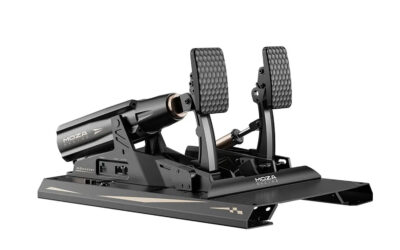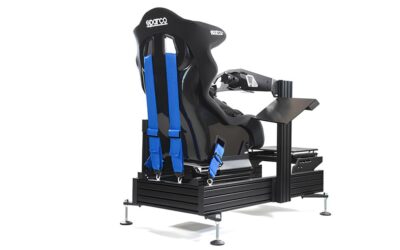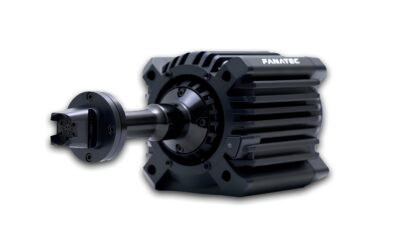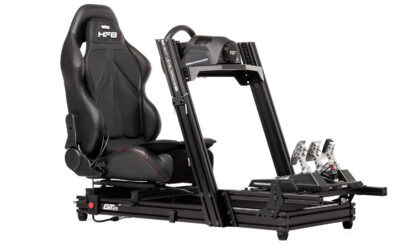In the world of sim-racing, there are several types of racer. We have those who want to spend time having fun after a long day working on titles like Need For Speed or Forza Horizon. Typically, their setup is a console with a joystick, or a steering wheel with a gear- or belt-driven base and a pedalboard, all attached to a desk or table. It’s rather crude in the eyes of some racers, but it does the trick if you don’t want to spend too much on sim-racing.
In the middle, we have players who are fans of the discipline, and incidentally of motor sports, and who are looking to get into the swing of things, but can’t afford a sports car for track days. Setups are equipped with Direct Drive base, Load Cell crankset and cockpit, not to mention steering wheels and/or handbrake. They cost more than a basic setup, but offer far more immersion in sim-racing.
And at the top of the pile, we have the players who swear by virtual competitions. Usually, these racers have already done some laps around the track or are members of an auto sports club, and their sim-racing setup is mainly used for training. Here, there’s virtually no limit to how you can configure your setup, except perhaps your budget, and even that would surprise me. The watchword is immersion, and everything is designed around that. You’ll find chassis and peripherals specific to the discipline, sometimes jacks for body movements, a ButtKicker for vibrations, a curved screen, and the whole shebang, especially at the top end.
However, there’s one element missing that’s hard to reproduce in your living room: the sensation of speed produced by the wind. Between the noise and the breeze running across your face, it’s a great way to feel like you’re in a real racing car.
The available solution for wind effects

The easiest way is to use a fan pointed at you. It’s really cheap, but very rudimentary in practice. You won’t be able to dynamically control wind speed, and it’s not really immersive either. However, there’s another way to convey the effects of wind, and that’s what we’re going to look at now.
This is the Alpha Wind Simulator, which is, as the name suggests, a wind simulator. In reality, it’s two turbine-type fans with two ducts to direct the airflow, and the whole thing is controlled by a box that’s connected to a PC.
The kit costs around €250 and allows easy DIY installation on virtually any chassis. All the hardware is included for easy installation. The configuration part is handled by SimHub, via the fan control box, and the software lets you adjust all aspects of the wind: its speed, curve, direction, etc. This solution is really well integrated into SimHub. This solution is really well integrated into SimHub, and thanks to the ventilation ducts, you can install the turbines behind the screen or on the chassis, out of sight.
Even if installation is easy in absolute terms, you’ll still need a bit of DIY know-how to make sure it’s clean and functional. The pipes, or ducts, need to be mounted close to you, so you can be sprayed with air in the right volume and direction.
I think the Alpha Wind Simulator is an innovative solution, adding the immersion that some gamers are looking for in sim-racing. It’s a product primarily aimed at the setup fan, reproducing virtually all the effects experienced by racing cars and drivers alike. What’s more, you’ll stay cool during long, stressful sim-racing sessions, which generate body heat. And for those who think fans will be noisy, the Alpha Wind is powerful, yes, but discreet in terms of its noise footprint. And even if it is noisy, race cars are too, which is an added element of immersion. And it’s available in a choice of colors, which is not at all essential, but so necessary these days.







0 Comments